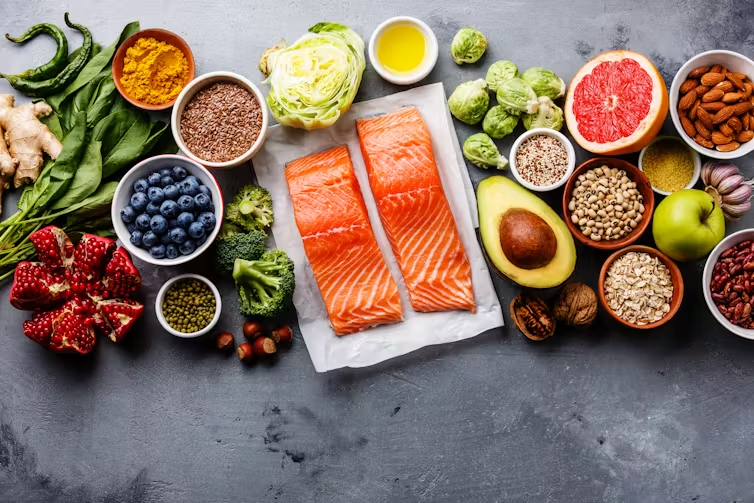Joint pain, a frequent and often debilitating ailment, can significantly impact our daily lives, making even simple movements a source of discomfort. While medical interventions are crucial for managing chronic joint conditions, the food we choose to consume can serve as a powerful and natural ally in reducing inflammation and alleviating pain. The realm of nutrition offers a diverse and flavorful array of ingredients brimming with compounds that possess anti-inflammatory properties and contribute to the overall health and well-being of our joints. Let’s embark on a culinary journey to explore what foods to embrace and which to limit or avoid to pave the way for greater comfort and mobility.
It’s essential to approach dietary changes as a complementary strategy that works in concert with medical advice and other healthy lifestyle practices. Consistently including nutrient-dense, anti-inflammatory foods in a well-balanced dietary pattern, while minimizing pro-inflammatory culprits, can contribute to long-term joint health and may play a significant role in managing the severity of joint pain, promoting greater comfort and an enhanced quality of life.
The Culinary Allies: Foods to Embrace for Joint Pain Relief
1. The Omega-3 Rich Brigade: Fatty Fish for Joint Comfort
Fatty fish such as salmon, mackerel, sardines, and trout are nutritional powerhouses, abundant in omega-3 fatty acids, particularly EPA (eicosapentaenoic acid) and DHA (docosahexaenoic acid). These essential fats are celebrated for their potent anti-inflammatory effects, which can aid in reducing swelling and alleviating pain within the joints. Aim for at least two to three servings per week through grilling, baking, or steaming.
2. Berry Bonanza: Antioxidant Powerhouses for Joint Health
Berries, including blueberries, strawberries, raspberries, blackberries, and cherries (especially tart cherries), are rich in anthocyanins, powerful antioxidants with significant anti-inflammatory properties. Enjoy them fresh, frozen, or incorporated into smoothies and desserts.
3. Liquid Gold: The Benefits of Extra Virgin Olive Oil
High-quality extra virgin olive oil is rich in monounsaturated fats and contains oleocanthal, a natural compound with anti-inflammatory effects similar to some pain relievers. Use it in salad dressings and for light cooking.
4. The Golden Spice: Turmeric’s Curcumin Advantage
Turmeric contains curcumin, a potent anti-inflammatory compound. Enhance its absorption by pairing it with black pepper and healthy fats. Incorporate it into curries, soups, and golden milk.
5. The Root of Relief: Ginger’s Natural Anti-Inflammatory Action
Ginger contains gingerols, which have demonstrated anti-inflammatory and pain-relieving effects. Use fresh ginger in teas, stir-fries, and even baked goods.
6. Nutty Nourishment: Almonds and Walnuts for Joint Support
Almonds and walnuts provide healthy fats, vitamin E, and magnesium, all beneficial for joint health. Walnuts also contain omega-3 fatty acids.
7. The Verdant Shield: Leafy Greens for Joint Well-being
Spinach, kale, and collard greens are loaded with vitamins, minerals, and antioxidants that can help reduce inflammation.
8. Broccoli’s Benefit: Sulforaphane for Cartilage Protection
Broccoli and other cruciferous vegetables contain sulforaphane, a compound that may help protect cartilage.
9. Garlic and Onions: Flavorful Inflammation Fighters
These pungent vegetables contain sulfur compounds with anti-inflammatory effects.
10. Whole Grains: Fiber for Reduced Inflammation
Opt for whole oats, brown rice, and quinoa, which are high in fiber and can help lower inflammatory markers.
11. Legumes: Protein and Antioxidants for Joint Health
Lentils, beans, and chickpeas are excellent sources of protein, fiber, and antioxidants.
The Culinary Adversaries: Foods to Limit or Avoid for Joint Pain Relief
1. Sugary Drinks and Processed Foods: High in refined sugars, unhealthy fats, and artificial additives, which can trigger inflammatory responses.
2. Red and Processed Meats: May contain compounds that contribute to inflammation in some individuals due to high levels of saturated fats and advanced glycation end products (AGEs).
3. Refined Carbohydrates: White bread, pasta, and pastries can lead to blood sugar spikes and increased inflammation.
4. Excessive Omega-6 Fatty Acids: Found in some vegetable oils (corn, soybean, sunflower), these can promote inflammation when not balanced with omega-3s.
5. Fried Foods: Often high in unhealthy fats and AGEs, which can contribute to inflammation.
6. High-Fat Dairy: May exacerbate inflammation in some individuals due to saturated fats and certain proteins like casein.
7. Excessive Salt (Sodium): Can lead to fluid retention and potentially worsen joint swelling.
8. Alcohol: Can contribute to inflammation and may worsen gout symptoms.
9. Advanced Glycation End Products (AGEs): Found in processed and high-heat cooked foods, these compounds can contribute to inflammation.
10. Nightshade Vegetables (for some individuals): Some people with arthritis report sensitivity to nightshade vegetables like tomatoes, peppers, eggplant, and potatoes, though scientific evidence is still debated. Keeping a food diary can help identify potential triggers.
Adopting a Holistic Approach to Eating for Joint Health:
The most effective strategy for reducing joint pain through diet involves adopting a sustainable eating pattern rich in whole, unprocessed foods with known anti-inflammatory properties, while minimizing pro-inflammatory culprits. This approach, combined with regular exercise, maintaining a healthy weight, and following medical advice, can significantly contribute to managing arthritis and promoting long-term joint health and well-being. Remember to listen to your body and consult with a healthcare professional or a registered dietitian for personalized guidance tailored to your specific needs and health conditions.
